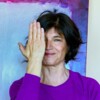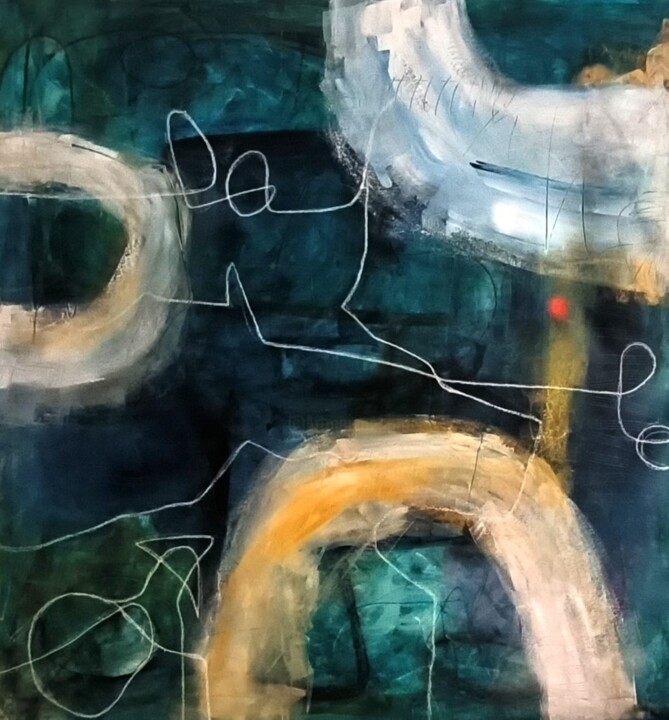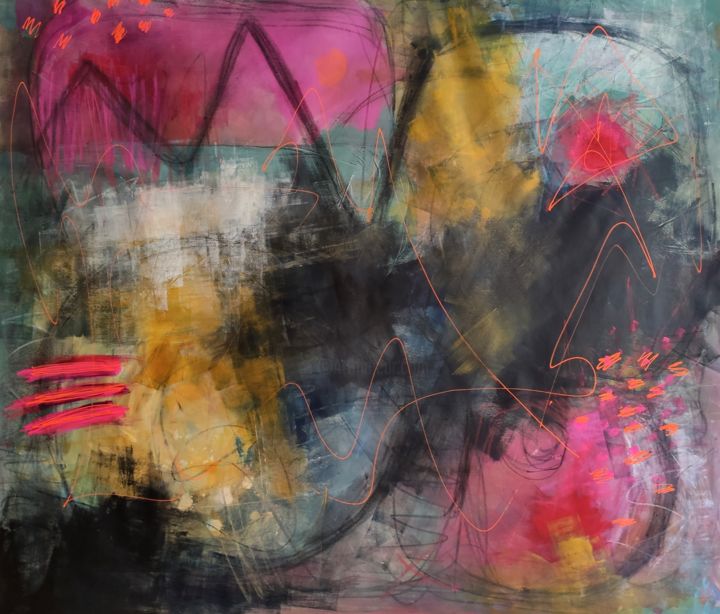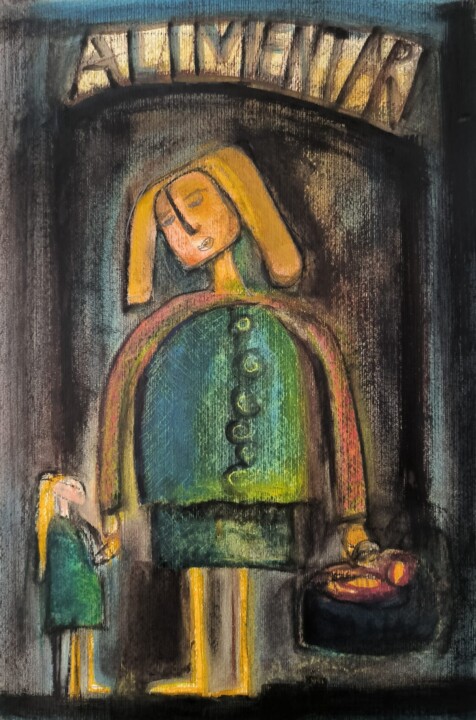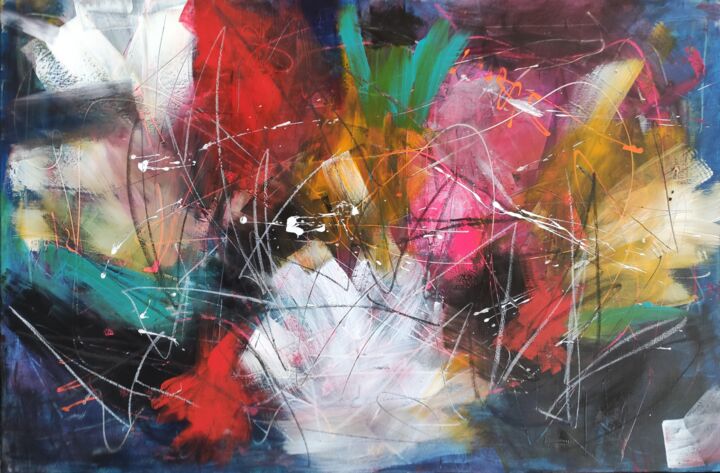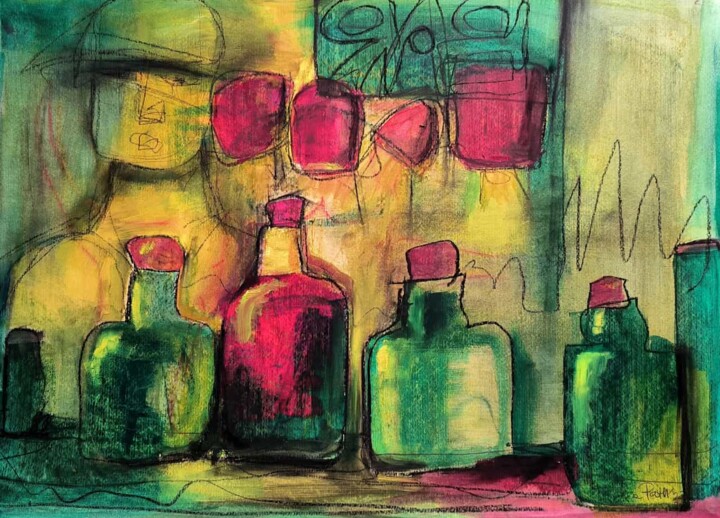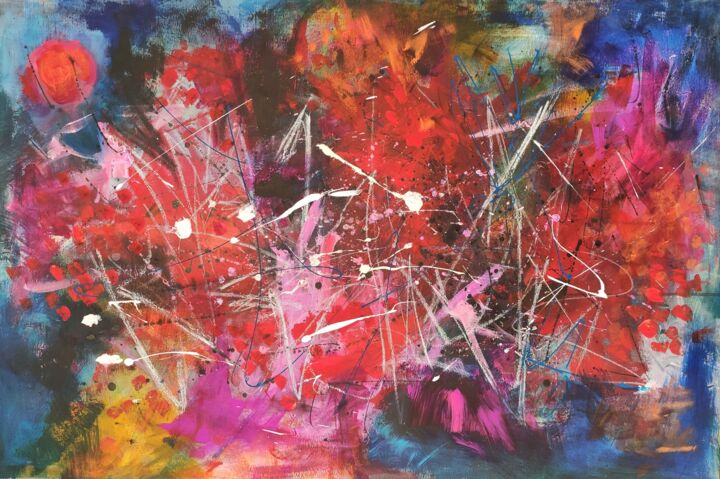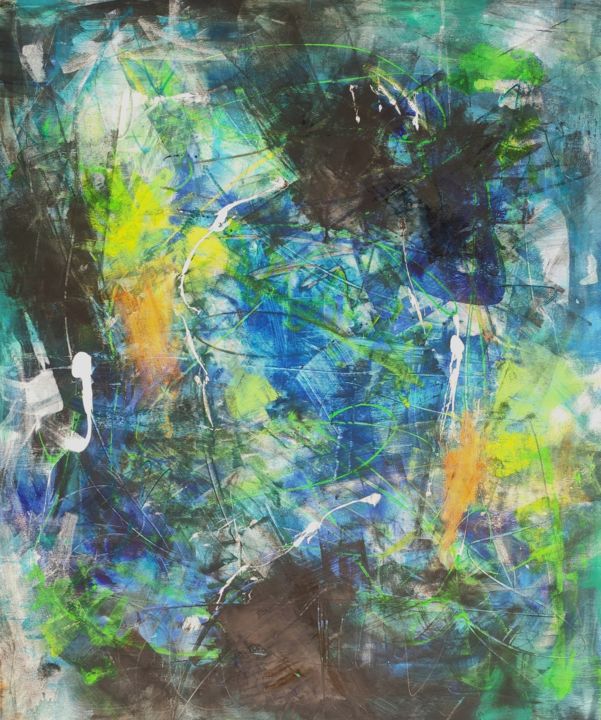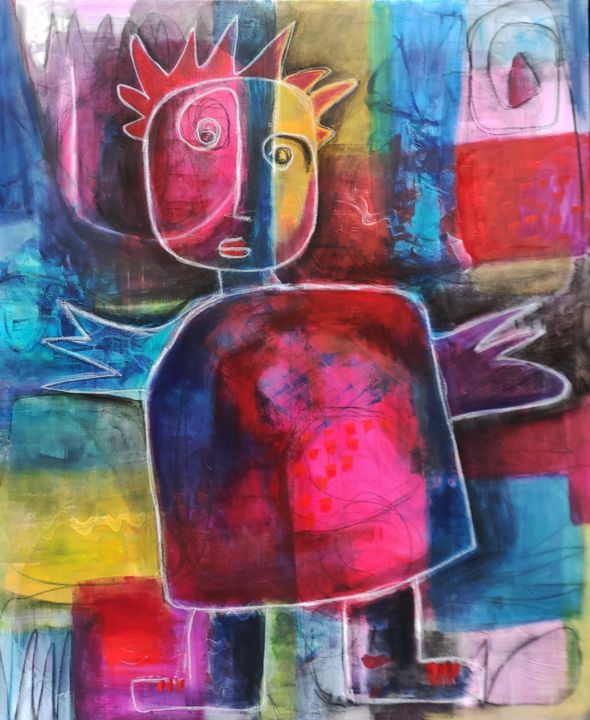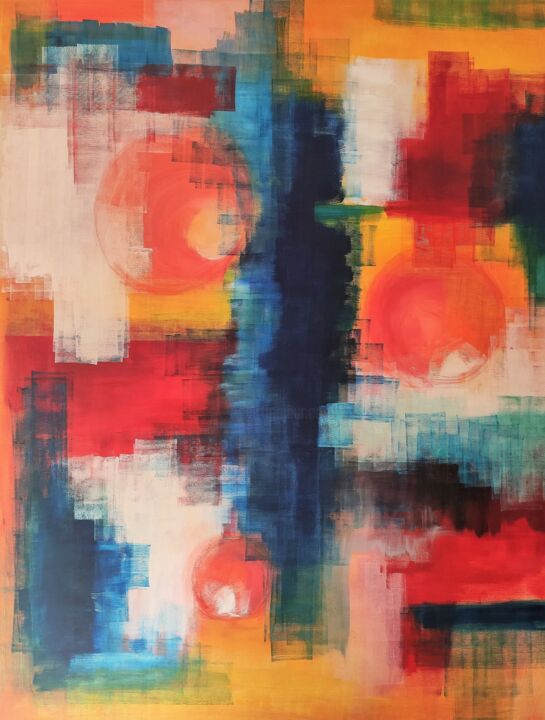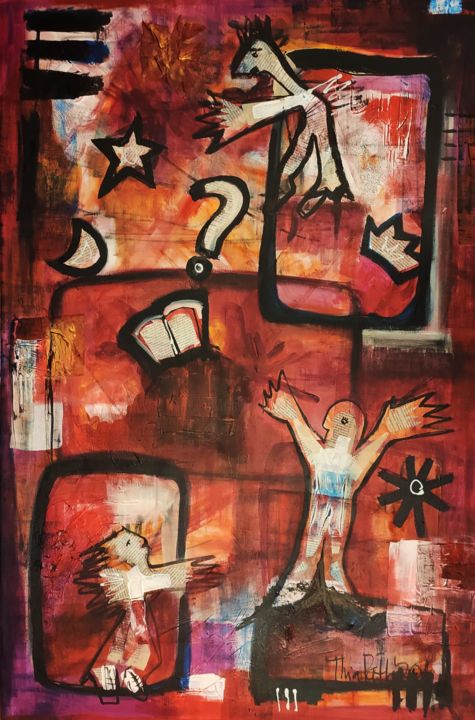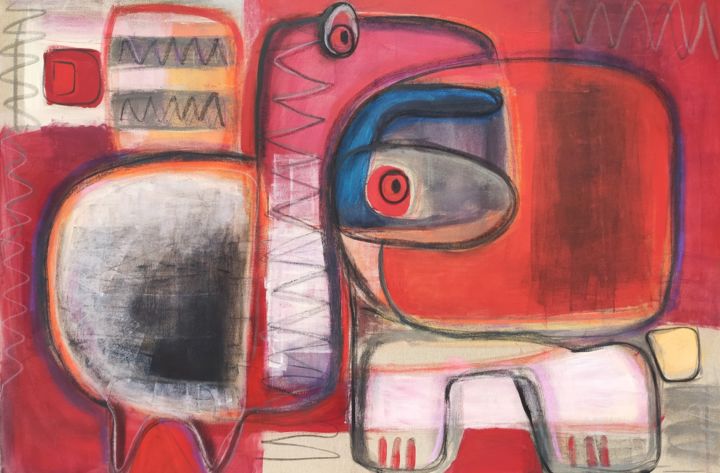What made you decide to become an artist? What is your path?
It was the visit, in 2001, of a personal exhibition by the American artist of Latvian origin Mark Rothko that marked my life. His work had a power that had never been found in any other painter. As a member of the Abstract Expressionist movement, Rothko was able to enter colors, make them speak, dialogue and vibrate and touch the soul of the beholder. He himself wrote: "I think that color, aided by light, enters into a relationship with the soul and brings about unexpected emotional consequences". And since then, I have always thought that his research deserved to be deepened. These works remained etched in my mind and, a few years later, I finally decided to find out what was behind his paintings. And so, in 2015, I started to paint regularly, analyze, test and learn. Since then, my art has had as a common thread, above all, the search for colors, their relationship, their energy and their relationship with gesture, shapes and proportions, with the clear intention to deeply affect the heart. and the mind of the beholder. A few months after starting, I felt my profession as an architect transformed and art filled me more and more, until the artist was born. So I decided to give myself a stage name, also to indelibly mark this important passage in my life and to confirm to myself my new professional path: Patricia Ferro was the architect and Thia Path the artist. Tia Pat as my five Argentinian grandchildren (my homeland) call me with whom I have played and continue to play despite their age, but with the addition of the h after the T in tribute to Rothko. Path, coincidentally, means path in English, a word that perfectly represents this new path of mine. A constantly evolving path.
What are the 3 aspects that differentiate you from other artists?
It's hard to say that I'm different from other artists, because there are so many of us and obviously I find some things in common with some. However, I could say that my art has two fundamental aspects: spontaneity and honesty. I don't paint according to a defined plan, but the colors guide me. When I am in front of the canvas, do I choose the colors initially, or should I say that the colors choose me? I do not know. It's a magical moment, when I let myself be guided by the colors, I superimpose them and that's how a thousand shades are born. By leaving my hand free, the gestures take over and watercolors, acrylics, oils, pastels and black ink remain on the canvas. My painting is direct and spontaneous, there are no models, but I discover everything as I work. It completely reflects my state of mind. Every now and then the lines turn into something figurative, but never realistic. I paint what is in me. I paint feelings, experiences, memories. The colors call me and ask to be worn on the canvas. In fact, it is as if the colors are playing a symphony, as an art critic called me a "musician of colors". Sometimes I use materials that I glue together, like paper, pages from books I have read, sand, fabrics. The eye, therefore, sweeps the canvas, turns, stops where it discovers the combination that suits its mood, then continues ..., as if it were a dance. They are paintings of contemplation and reflection. They are excellent when accompanied by a glass of good wine. A final, very important aspect is light, with which I have always worked as an architect. My works change profoundly, whether the light is natural, artificial, direct or indirect. It is often as if you see a different painting depending on the light you receive. As Rothko said, "I think color, aided by light, is linked to the soul and leads to unexpected emotional consequences." So I always advise my clients to position them according to the type of light they receive. I often suggest the best paint depending on the environment in which it will be displayed. I always ask my collectors, if they are far away, to send me pictures of the space they want to furnish and I make photomontages, suggesting different solutions. If they are close, I go there in person and we also bring the works.
Where does your inspiration come from?
Colors themselves. There are days when I also start with the gesture. I turn on the music, close my eyes, and start drawing a single line. Sometimes with my right hand, sometimes with my left hand. I choose the colors and I start. And then everything goes without saying. There comes a time when I feel that the work must rest, settle down. He can stay there for a day, a week, or even a month. And it starts again with a vengeance. Colors and brands slowly complement each other. I often look at the board for several minutes and after a while I realize what is missing. Colors can match or oppose. I like the complementary colors because they are felt on the canvas. It's a constant discovery.
Tell us about the design of your works. Do you have a long preparatory work or is it spontaneous?
I have already partially answered this question. My art is mainly spontaneous and instinctive. Sometimes I see combinations of colors somewhere, it can be an advertisement, a painting, an object, an item of clothing and I think I would like to work with these colors, as if they resonate with me. On other occasions, it's the music that inspires me. And then when I start, everything is transformed. My colors are never sharp, but they meet and create thousands of other colors and veils. At other times, I prefer to work only with cool colors, but always accompanied by a warm color and vice versa. Finally, and in most cases, there is the strength and power of black. A presence that completely changes the work. Lately I have started working with fluorescent colors which are wonderful!
What do you want to show through your work?
That living with art improves the quality of life. What I love about my paintings is that they invite you to stop, step out of reality for a while, and get lost in the colors. I want my painting to take effect slowly, I want the colors to strike the soul of the viewer, I want him to bring light and energy to his environment and to his life.
Do you use unusual techniques or materials in your work?
It's hard to talk about unusual materials these days, because you can make art out of anything. I painted with oil, pastels, acrylics, markers, ink, chalk, watercolors, but I can also use sand, gold leaf, fabric, thread , cardboard. For example, I also painted a toilet for a theatrical performance and I have to say it turned out to be a beautiful piece of pop art. I work both on canvas and on paper precisely because the mark you leave on either one is so different.
Do you have a preferred format? Why ?
I started out with small works, but now I much prefer large formats. I really like the 100x120cm format, because depending on how you hang it, it occupies the space in a different way. Almost all of my abstract works are signed on the back as they can be returned. I like the possibility of being able to change the orientation of my works, because they become different. I also have an interesting series of 50x50 square works, some of which form a diptych, while others can be placed next to each other and create a dialogue in their own right.
What difficulties do you encounter in your work?
Sometimes I have a shape in my head and want to paint it, but when I arrive in the studio, I realize that it is better to let body and mind talk about them- same. Another curious thing, although I can't say it's a difficulty, is when people ask me the meaning of the painting. They tell me, I like it a lot but I don't understand! I'm sure you don't have to understand art to appreciate it. If a painting catches your eye and pleases you, it's over, it has touched you, like when you fall in love. These colors spoke to you and gave you the energy you were looking for. And it is always the observer who must analyze why. A bit like Sigmund Freud when he analyzed the dreams of his patients.
How do you work? At home, in a shared or private studio?
I have my personal studio in a street in the historic center of Piacenza, opposite the oldest restaurant in town. With my neighbor, we often go for coffee at the Mariuccia bar. Then people walk by and stop to look, ask ... the colors are very eye-catching. It is very beautiful. Now that the size of the works is getting bigger and bigger, I am starting to run out of space, so I am thinking about looking for something bigger. I also run classes in my studio I call RilassArte, where I teach people how to bring out the artist in them, using different fun and relaxing techniques, like I do in high school with my students. , where I teach art and image.
Does your work as an artist require you to travel a lot?
So far, I have traveled a lot as an architect or a tourist and this is reflected in my paintings. I now receive several invitations from European galleries in particular. So after the pandemic, we hope to resume.
What is the best time of your career?
I think, like all artists, it's great when your art is appreciated and you sell your artwork. It's also great when you see that your work has found its place in ITS. For now, I can say that all the time I spend creating and promoting my art is a wonderful time. But I want to think that the best time is yet to come.
How do you see yourself working in ten years?
I would like to be present in several private collections in many countries (for the moment I am only present in 8) and in galleries all over the world. I would like to exhibit in my country of origin, Argentina. And why not, in a museum. From the galleries, I find that the audience that follows me the most online is predominantly European and North American, although my works could also fit very well into South American and Eastern environments. When you work with color, you are working with something universal.
What are you currently working on? Do you plan to exhibit your works soon?
I work in parallel on two different collections. An abstract, on canvas and of large dimensions, with predominantly cold colors and fluorescent colors. And another on paper, 50x70 cm entitled Altamira collection. A collection which recalls the first signs of life on our planet and which dialogues between them, as if it were a secret message to be deciphered. In November, I will also participate in a group exhibition in Milan dedicated to the Divine Comedy, on the occasion of the 700th anniversary of the death of Dante Alighieri. At the moment, however, I have a solo exhibition at the Grande Albergo Roma in Piacenza. The most important in the city.
If you could have created a famous work in the history of art, what would it be?
It's definitely a Rothko painting.
If you could invite a famous artist (dead or alive) to dinner, who would it be?
Mark Rothko! Without a doubt.

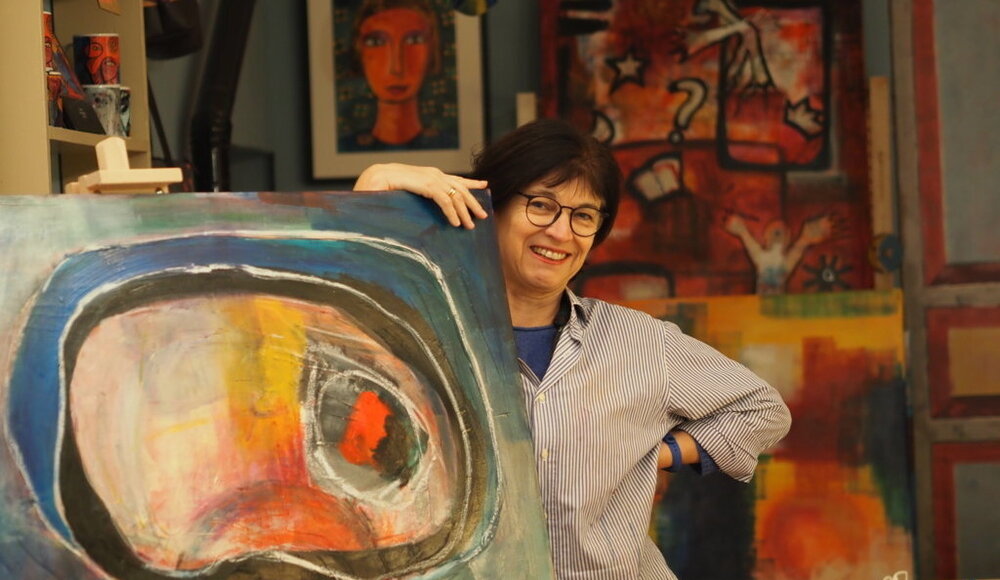
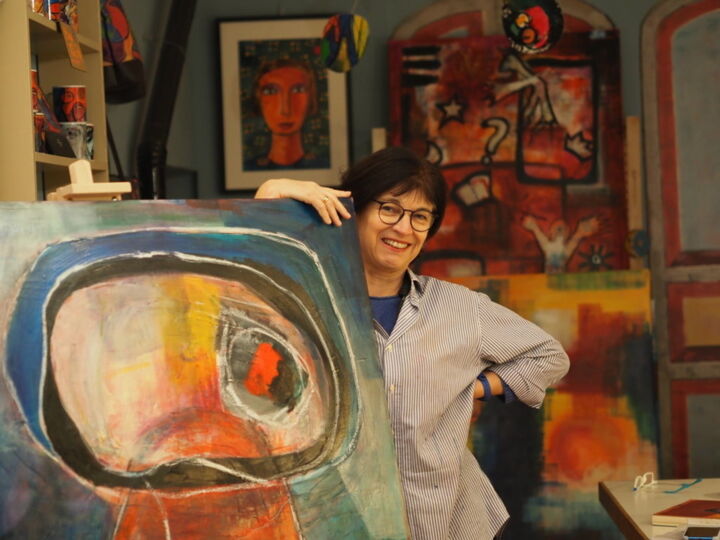






 Olimpia Gaia Martinelli
Olimpia Gaia Martinelli
